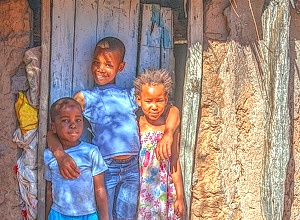In multiple sub-Saharan countries more than half of women reported having lost at least one sibling before the age of 25, found a large study. Across all 43 studied lower-and-middle income countries internationally, roughly one third of the young women in the representative dataset had at least one deceased sibling.
On average, about a third of women between 15 and 34 years old from 43 low-and-middle-income countries (LMIC) have lost at least one sibling before the age of 25, according to a study by Emily Smith-Greenaway from the University of Southern California Dornsife College of Letters, Arts and Sciences, and co-author Abigail Weitzman.
Over half of respondents in Burkina Faso, Democratic Republic of the Congo, Cameroon, Niger, Burundi, and Rwanda had experienced at least one sibling death). Sibling loss was relatively less common, at slightly more than ten percent of respondents, for respondents in South Africa, Bolivia, and Columbia. Most of these reported sibling deaths occurred during the respondent's lifetimes, rather than prior to the respondent's birth.
Though research examining the impact of sibling death on children and families is growing, much of this new literature focuses only on data from high-income countries in North America and Europe. In this study, Smith-Greenaway and Weitzman seek to address this gap by studying the experiences of women from 43 different LMIC in sub-Saharan Africa, South/Southeast Asia, and Latin America and the Caribbean.
The authors used data from nationally representative samples of 348,314 15- to 34-year-old women, born between 1985 and 2003, to document experiences of sibling death (before turning 25). The dataset comes from the Demographic and Health Survey Programme, which has administered regular household-based surveys across more than 90 LMIC for the past 30 years.
Across all 43 studied countries, roughly one third of the young women in the representative dataset had at least one deceased sibling. (In comparison, approximately eight percent of US youth have experienced a sibling's death before age 25.) However, the dataset showed significant regional variation: countries affected by conflict and war tended to show even higher numbers of sibling deaths.
Across the studied countries in Asia and Latin America and the Caribbean, over one-third of bereaved respondents experienced the loss of two or more siblings. Multiple sibling losses were reported at higher rates from respondents in Western, Central, and Eastern African countries, contexts with high fertility and high rates of under-five mortality. However, bereaved respondents in the majority of studied countries – including those who experienced numerous sibling deaths – still had a comparable number of remaining living siblings relative to peers whose siblings were all still alive.
The survey data represents only those sibling deaths that the respondents were aware of and remembered, so may undercount deaths. However, these results are an important step to understanding the implications of sibling mortality for young people across the world, especially in understudied regions.
The authors add: "Siblings influence each other's development in powerful ways, yet we know little about how often these intimate bonds are broken by premature death – especially in the global south. We find that, in many low- and middle-income countries, more than one-third of young people experience a sibling death during their formative years, confirming that sibling loss is a very common early life adversity in many global contexts that must be acknowledged and interrogated."
Abstract
In high-income countries, emerging research suggests sibling bereavement can have significant health and life course consequences for young people. Yet, we know far less about its burden in lower-income countries. Due to higher fertility and mortality in lower-income countries, the level, timing, intensity, and circumstances surrounding sibling mortality are likely to follow patterns distinct from those in higher-income settings. Thus, in this study, we offer a descriptive overview of sibling death in 43 countries across sub-Saharan Africa, South and Southeast Asia, and Latin America and the Caribbean. Specifically, we analyse Demographic and Health Survey data from nationally representative samples of 352,930 15- to 34-year-old women, born between 1985 and 2003, to document experiences of sibling death before age 25. On average, roughly one-third of individuals report a deceased sibling in these countries; estimates reach 40–50% of respondents in multiple African countries, particularly those that have experienced conflict and war. Although some sibling deaths occurred before the focal respondent was born, most bereaved individuals recalled a death during their lifetime—often in late childhood/early adolescence. High proportions of bereaved respondents report multiple sibling deaths, highlighting the clustering of deaths within families. Even so, bereaved individuals tend to come from large families and thus frequently have a comparable number of surviving siblings as people who never experienced a sibling die. Together, the results offer a window into global inequality in childhood experiences, and they attest to the need for research that explores the implications of sibling mortality for young people in world regions where the experience is concentrated.
Authors
Emily Smith-Greenaway, Abigail Weitzman
[link url="https://journals.plos.org/plosone/article?id=10.1371/journal.pone.0236498"]PLOS One Full study[/link]

